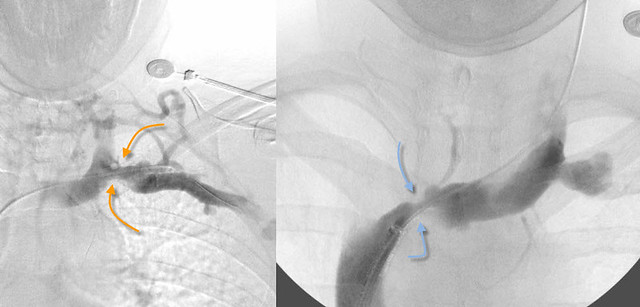drsclafani wrote:If you believe that the aorta and the superior mesenteric artery are really compressing the renal vein in the nutcracker syndrome (which i do), then one would realize that the renal stent would be held in place by those two structures. Moreover, the length of the left renal vein, crossing from left to right to enter the inferior vena cava, is long enough to place in most cases a 6 cm stent. the more stent, the less likely migration.
Please clarify... to whom does this quote apply? Cece's case, the current patient's case, or is it a general statement about CCSVI pathology?
drsclafani wrote:Migration is very uncommon both in jugular and in renal and iliac veins. I think the evidence is clear on that. There are other reasons to be cautious with stents but migration is not a significant issue.
I have not heard of this evidence; it is relieving to hear that it exists. But
1. Could you provide a quick summary of the "other reasons to be cautious with stents"?
2. I believe that stents are subject to metal fatigue/fracturing. If true, does it depend on the amount of movement at the placement site (I believe you have discussed this before)?
3. Are stents available that prevent endothelialization (or whatever the correct word is that represents the endothelial cells encasing it)?



